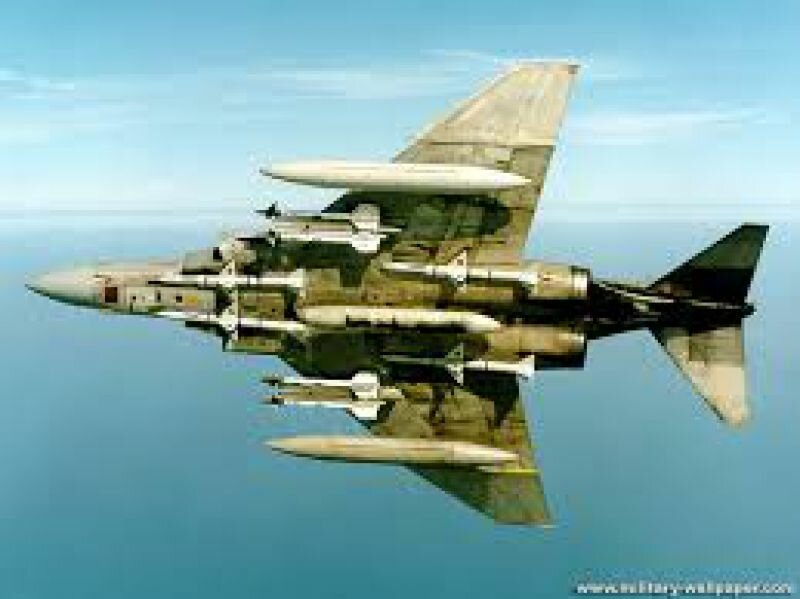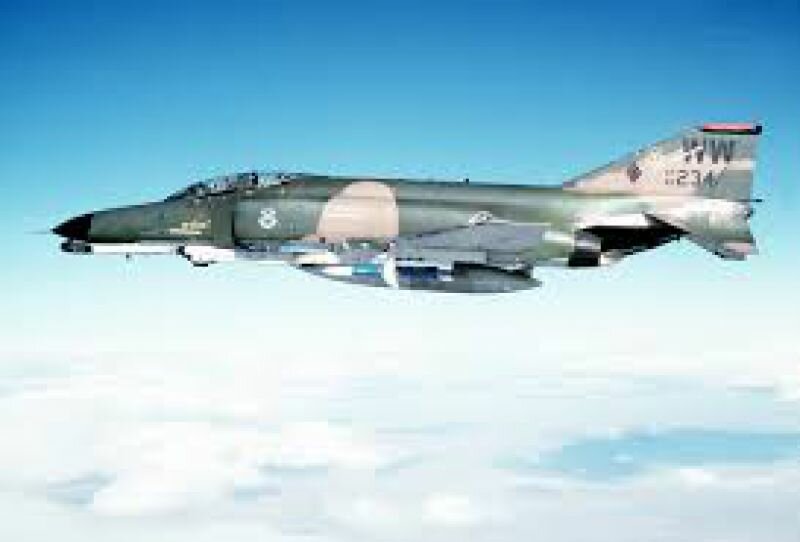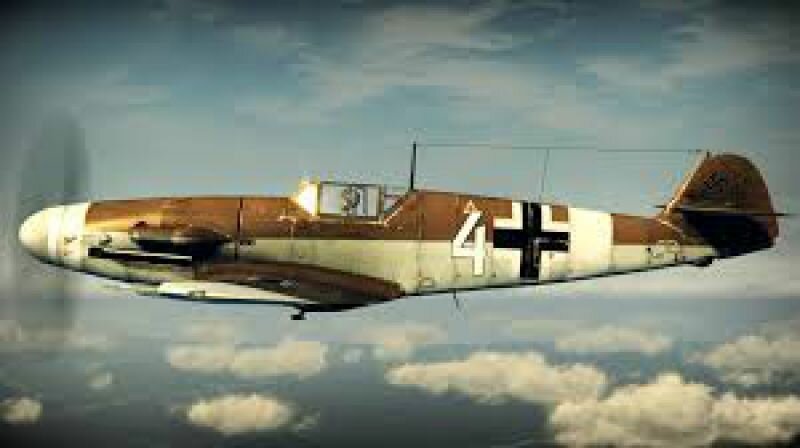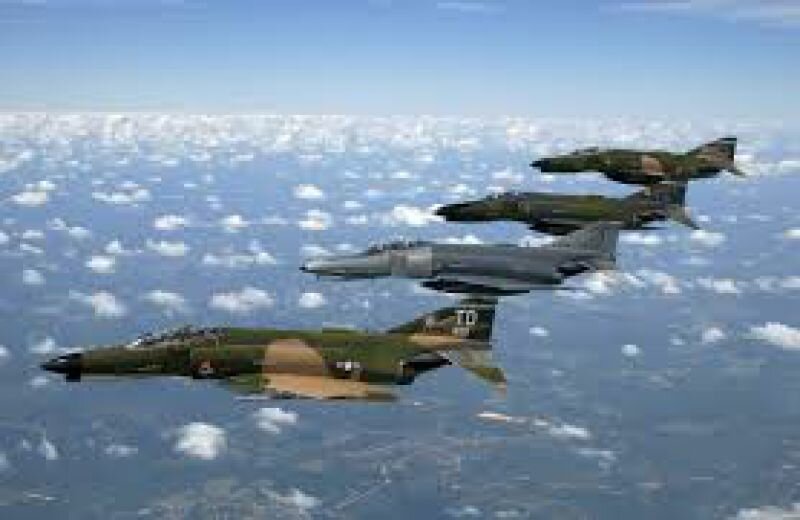The weapon holds a great power of attraction.
And not only for those hungry for power. The weapon is beautiful. Whether it’s a Roman catapult, a Indian axe, or an American fighter-bomber. I know of ugly paintings, deplorable cars, but an ugly weapon? Off the top of my head, I can’t think of a single one. Even the most murderous weapon is beautiful. How is this possible? Shouldn’t evil automatically be ugly? A landmine is ugly. Especially those embellished with Mickey Mouse dolls.
Little children pick them up and – boom – they’ve lost their hands. These mines find their market because there is nothing that upsets the enemy as much as sick, wounded, wailing children. But fighter jets are so beautiful.
The MacDonnel F-4 Phantom fighter-bomber is beautiful, despite being guilty of more mutilation and deaths than all the landmines in the world during its long career in the American air force.
Fighter jets are beautiful thanks to their organic form and their advanced technology. There's absolutely nothing I can about feeling this way. This year marks the 25th anniversary of the end of the Vietnam War. The capitalist Americans retreated and left the communist Vietnamese at peace. I’m not sure how long the American army was stationed in Vietnam. All I know is that it was a long time. The carpet of bombs released by the F-4 Phantom set the country ablaze. What remained were ashes. I was in high school at the time. I sent letters to American airplane factories. I expressed my interest about certain types of fighter planes. I wrote to MacDonnel, Douglas, Northrop, Boeing, Lockheed, North American, Convair. They always responded.
Then the folders came, full of wondrous colour images. I’d cut them out and paste them in an album on which I’d written in large, fat letters: “American Fighter Planes in Vietnam.” The album is nowhere to be found.Under each photo, I’d write how the particular airplane was armed. Which kind of bombs it could carry. Its range. Its cruising speed. And so forth. Strange hobby. Strange boy. I must have been fourteen. I lived in Amsterdam, it was the late sixties. The Spui was two kilometres from my home, where each Saturday evening the Provo’s would organise themselves around het Lieverdje to perform their socio-critical happenings. Huge demonstrations passed through the city. Thousands of voices shouted that the Americans must retreat from Vietnam and that Johnson, the American president at the time, was a murderer. A police regulation became enforced: anyone who shouted that the American president was a murderer could expect to be arrested for insulting a befriended head of state. And so, a thousand voices shouted that he was a gardener instead. And everyone heard what they wanted to hear. Except for me, I heard nothing. I cycled from home to school with a bag full of books, and from school to home again. When I’d finished my homework, I assembled plastic models of airplanes.
Boeing B17 Flying Fortress/North American P51 Mustang: Queen of the Sky/Messerschmitt ME 109/Lockheed F104 Starfighter/Convair F102 Delta Dagger. I read comics with star pilot in the lead role like Buck Danny and Dan Cooper. In class I sat next to a boy, airplane-crazy like me. Without fail, at the sight of a plane we’d turn to each other and whisper: Tupolev 114, Douglas DC 10, BAC One-eleven, Boeing 707, Caravelle. After a while, we didn’t even need to look, and the sound of the engine was enough. My deafness to the cries from streets against the American president certainly wasn’t due to a lack of hearing.
At a certain age, the world makes its entrance into the lives of boys. The real world of flesh and blood. Then, the cool beauty of the thing; the thing for the sake of being a thing, must step aside. I won’t divulge which girl first broke the spell. One day I stood on the rear balcony of my parents’ house, a pile of model airplanes at my side, a catapult in hand. Instead of flying them, I shot them, one by one, into a wall bordering the yard. They flew into the air like cups and saucers and were smashed to bits.



